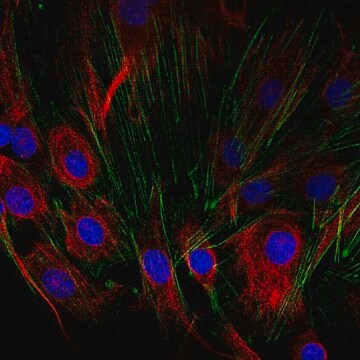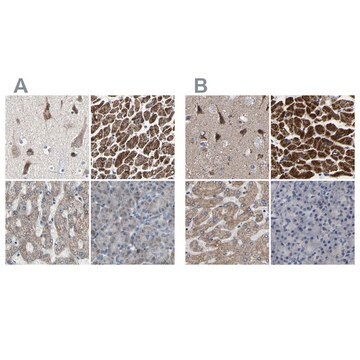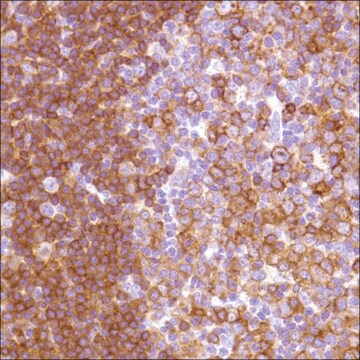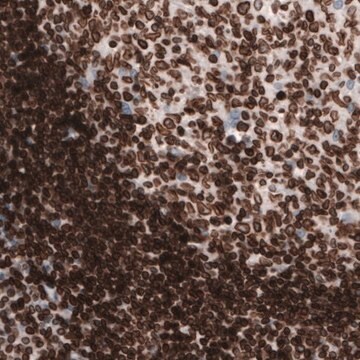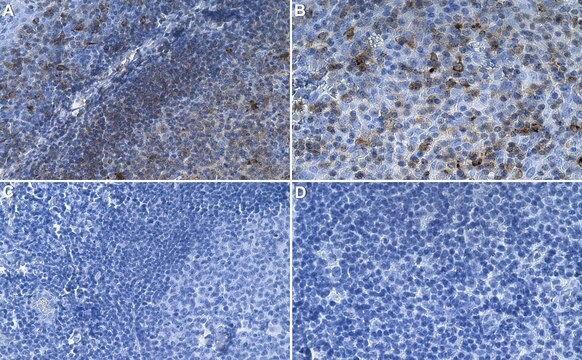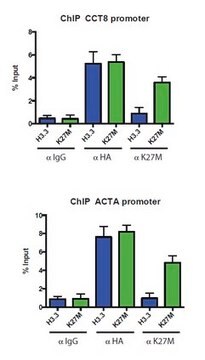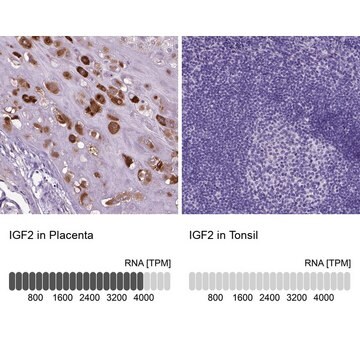MAB16985B
Anti-MCAM Antibody, clone P1H12, biotin conjugated
clone P1H12, Chemicon®, from mouse
Synonyme(s) :
MUC18, CD146
About This Item
Produits recommandés
Source biologique
mouse
Niveau de qualité
Conjugué
biotin conjugate
Forme d'anticorps
purified immunoglobulin
Type de produit anticorps
primary antibodies
Clone
P1H12, monoclonal
Espèces réactives
mouse, human, canine
Ne doit pas réagir avec
rat
Fabricant/nom de marque
Chemicon®
Technique(s)
ELISA: suitable
flow cytometry: suitable
immunocytochemistry: suitable
immunohistochemistry: suitable
immunoprecipitation (IP): suitable
Isotype
IgG1
Numéro d'accès NCBI
Numéro d'accès UniProt
Conditions d'expédition
wet ice
Modification post-traductionnelle de la cible
unmodified
Informations sur le gène
human ... MCAM(4162)
Catégories apparentées
Description générale
Spécificité
Immunogène
Application
Immunohistochemistry: 1-10 μg/mL. 4% PFA for 30min RT or <2hrs @4°C. Block w/ 1%BSA/0.2%tween20/PBC for 30min. Works well in frozen tissue; fixed or unfixed.
Immunoprecipitation: 1-10 μg/mL
ELISA: 1-10 μg/mL
Facs Analysis: 1-10 μg/mL
Optimal working dilutions and protocols must be determined by end user.
Cell Structure
Adhesion (CAMs)
Forme physique
Autres remarques
Informations légales
Clause de non-responsabilité
Vous ne trouvez pas le bon produit ?
Essayez notre Outil de sélection de produits.
Code de la classe de stockage
12 - Non Combustible Liquids
Classe de danger pour l'eau (WGK)
WGK 2
Point d'éclair (°F)
Not applicable
Point d'éclair (°C)
Not applicable
Certificats d'analyse (COA)
Recherchez un Certificats d'analyse (COA) en saisissant le numéro de lot du produit. Les numéros de lot figurent sur l'étiquette du produit après les mots "Lot" ou "Batch".
Déjà en possession de ce produit ?
Retrouvez la documentation relative aux produits que vous avez récemment achetés dans la Bibliothèque de documents.
Notre équipe de scientifiques dispose d'une expérience dans tous les secteurs de la recherche, notamment en sciences de la vie, science des matériaux, synthèse chimique, chromatographie, analyse et dans de nombreux autres domaines..
Contacter notre Service technique